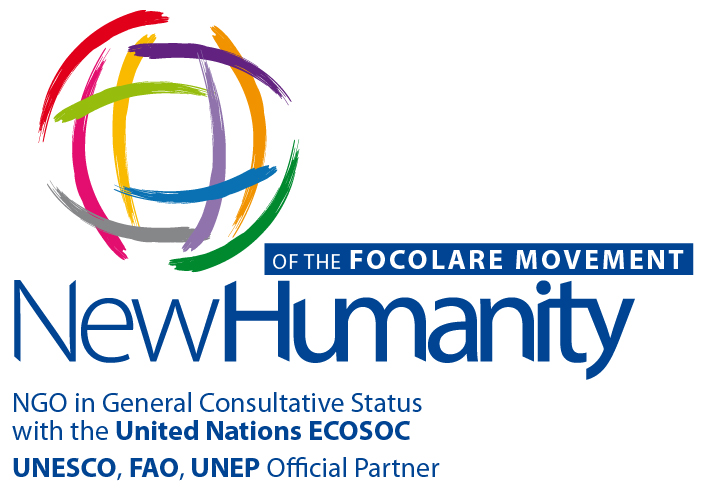Assistant Professor of Global Studies
Sophia University, Japan
Korea, my homeland, and its inseparable enemy Japan, where I teach peace and reconciliation, will celebrate the fiftieth anniversary of their diplomatic normalization this year. The cross-cultural affinity in addition to economic interdependence gives an impression that both countries have reached a certain level of reconciliation. Nonetheless, the gulf between these ‘geographically close but psychologically far’ countries became insurmountable these days.
Teaching peace and reconciliation in Japan and Korea has not been an easy experience. I still remember my first class in Japan when my students asked me: “Professor! Japan is such a peace-loving country. Why are Koreans and Chinese angry at us?” I also remember the one in Korea: “What’s wrong with Japan? Why are they not apologizing for their misdeeds? See what Germany has done!” Neither side showed any space to try to understand why the other side does not think the way they do. However, since I started giving lectures about the Poland’s relations with Germany and Russia, the France’s relations with Germany and Algeria, and the UK relations with Kenya and Caribbean countries, students started having deeper reflections about themselves and the other. The first step toward reconciliation is the willingness to fully understand how and why the other side sees the same issue from a different angle, which requires an active listening attitude.
Every time I participated in a Korea-Japan-China trilateral meeting, I often found a very passive listening attitude among participants. Each side comes on behalf of its government to deliver their own message: “We think this is right: our position is this.” In a monologue style of conference, there is no space for a mutual understanding. There can be millions of meetings in this way; there will never be any step toward reconciliation. German Chancellor Konrad Adenauer consulted counterparts’ opinion several times before he delivered his apology speech to make sure that the words he chose was also the way the counterpart would agree. Just like the expression two to tango, reconciliation implies two sides. The beauty of tango does not depend on how perfectly you make your own steps. It rather relies on how well you feel and understand your partner through eyes, hands, and body tension in order to make your next move. Reconciliation process goes the same way. You do not unilaterally deliver a message. You listen when others talk, but you also listen to what others think about what you say when you talk. Only if political and societal actors ‘dance tango’ during the dialogue process can real reconciliation happen between enemy states.
A sense of we-ness beyond national borders is a new concept in international relations and has very few empirical cases. For this reason, international NGOs promoting interfaith dialogue can play a crucial role in broadening the horizon of public perception toward the otherness. Chiara Lubich said at Westminster Central Hall in 2004 that the contribution of religion could be considered as a strategy that brings about a real change even in international relations. There are a few religious movements both in Japan and Korea in which youth are actively playing a role in promoting cross-national dialogue. Focolare, a Catholic lay movement, and Rissho Kosei-kai, a Buddhist organization, are good examples. Both in consultative status with the UN ECOSOC share a commonality of openness to diversity despite their monotheist roots and have a particular interest in promoting dialogues among cultures and religions. Focolare organized a series of Japanese-Korean youth meetings in Seoul last year for interreligious dialogue where youth from Rissho Kosei-kai were also invited. This may not bring a drastic change in reconciliation. Nevertheless it is through day-by-day efforts that we learn to think about the quality of the peace relationship we want to have with our daily ‘enemies’.
Compared to the European reconciliation cases, South Korean and Japanese religious actors have played a surprisingly little role in cross-national reconciliation. Some argue that the state-centered society is a serious obstacle to active engagement in reconciliation as a social force. Others think that the non-Christian or a-religious culture explains the inherent limit of their role. If these arguments are true to some extent, there is still a need for further reflection. Among others, one of the main reasons comes from the ambivalent connection between religious value and national identity. While religious value played a positive role in bringing lay movements, media elites and political leaders together between Poland and Germany, it played a negative role that divided people in South Korean and Japanese relations. Poland, a Catholic country, and Germany, strongly embedded with Protestantism, did not show any conflicting or competitive spirit in working together toward reconciliation in the 1960s and 1970s. Also significant were the extensive connections between Catholics in Germany and Poland and between Protestants in the two countries. Catholics and Protestants did not always share the same opinion on how to resolve the expellees’ issues or to what extent the church should get involved in politics. But in both countries they shared the same conviction that reconciliation is the way for Poland and Germany to restore a stable, peaceful relationship. However, the difficult position Korean Catholics and Protestants, along with Buddhists, had to take against the Shinto nationalism during the Japanese colonial period made it difficult for them to work toward reconciliation after the end of the Second World War.
It is only in 1990s that reconciliatory efforts from religious actors became visible. On the Catholic side, in 1996 the Bishops’ conference in Korea and Japan started collaborating and now holds an annual meeting to work for South Korean-Japanese reconciliation. At the commemoration of the 100th anniversary of the conclusion of the Japan-Korea Annexation Treaty in 2010, Jun Ikenaga, Archbishop of Osaka and President of the Catholic Bishops’ conference of Japan, said: “At this crucial point of history, it is important to earnestly reflect on how the Japanese colonial policies were, including the responsibilities of the Catholic Church. To courageously admit one’s failures is not to belittle oneself, but rather to approach the real human figure as Christ desires. In this way, He will break down the dividing wall of enmity and guide us to real reconciliation.” In Peace Message After 70 Years from the End of World War II, the bishops of Japan stated in February 2015 that ‘We ask for forgiveness to our Asian brothers about the tragedy Japan brought during the World War II’ and urged for more dialogue and negotiation.
On the Protestant side, the National Christian Council in Japan, a regional branch of the World Council of Churches based in Geneva, has been very active in protesting the visits by prime ministers to worship at the Yasukuni shrine. In 2006, Seiji Suga, Chairperson of the Council, wrote a letter to Prime Minister Junichiro Koizumi on behalf of the Council: “We Christians were witness to the sins of our nation as it pursued aggressive warfare and colonialist policies in other Asian nations. We did not protest, but in fact committed the sin of accepting and supporting these policies. Repenting of these sins, we have strived through prayer, verbal protest, and action, to call our nation to admit the wrongs of aggressive warfare and colonialist policies. […] However, Prime Minister Koizumi, you have trampled on our desires, and since August 13, 2001, have continued obstinately to push ahead with yearly visits to worship at Yasukuni Shrine culminating in the visit this year on August 15. We rigorously protest these visits. […] The Prime Minister’s visit to worship at Yasukuni Shrine goes against the peaceful nonaggressive policies of Japan, which have won the trust of foreign countries. These visits break the bonds of reconciliation and goodwill that have been forged over many long years with the people of Asia.”
When it comes to the Buddhist movements, Sou-tou-shu (曹洞宗), one of the largest Buddhist bodies in Japan, made a significant gesture of reconciliation in August 2012—the first of this kind. Ichinohe Shogo, the abbot of Unshou Temple in Aomori, said that they decided to set up a memorial stone with a message of apology and repentance at Dong-guk Temple in Gunsan, Korea: “The reason that Japan and Korea have not yet overcome the wall even after forty-seven years of diplomatic normalization is the lack of sincere repentance. I think that this memorial can make a big step towards our future. The only way to resolve colonial issues is through sincere repentance.” Dong-guk Temple was built in 1909 by Sou-tou-shu with the aim of propagation, but it actually served as a military base. Despite hostile reaction and severe threat from right-wing politicians, Ichinohe expressed his lifelong conviction: “Before being a monk of Sou-tou-shu, I am a disciple of Buddha. If I don’t call what is wrong a wrong thing, if I do not apologize for wrong doings, I cannot call myself a monk anymore. Because Buddhism is a practical religion pursuing peace and harmony, the Sou-tou-shu’s message of apology and the memorial itself is very significant.”
Korea is not Poland and Japan is not Germany. It is true that Europe has its root in Christianity. But it is important to note that Christian heritage including Anglicans, Protestants, Catholics, and Orthodox was also the cause for innumerous brutal inter-confessional conflicts throughout European history. It took decades and even centuries to agree on the Augsburg treaty in the late 1990s, the marking point of reconciliation between the Catholic and Protestant churches. In other words, there were conscious and constant efforts from both sides to arrive at reconciliation. If inter-confessional dialogue led to a successful reconciliation in Europe, why can interreligious dialogue not do the same in Asia? It is certainly a more ambitious goal to achieve. Nonetheless, it will be an unprecedented example of international reconciliation if South Korea and Japan manage to create a locus for dialogue bridging Buddhist, Christian, and even Shinto culture. The “Asian” way of reconciliation will in turn serve as a guideline for Europe, facing the current challenge of Turkey’s EU membership and 70 million Muslim citizens.



